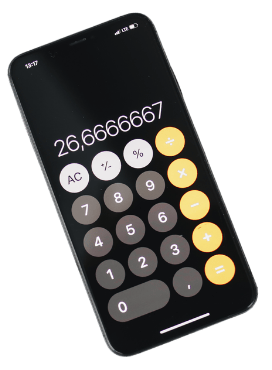Maths Teachers in Australia: “We Just Want to Teach”
Maths teachers in Australia want to focus on teaching curriculum content. Instead, they spend most of a lesson managing student behaviour. A recent discussion among Australian teachers paints a blunt picture of what gets in the way, why it escalates by Years 10–11, and what might actually help.
The Daily Reality for Maths Teachers in Australia
Students arrive late (often 10–20 minutes), without books, pens, notes, or laptops.
They regularly ignore seating plans, talk over instructions, and disrupt peers.
Printed worksheets are missing or scrunched, pencils snapped, and devices are used for games.
Requests for routine (“open your book”) are derailed by constant micro-issues: toilet requests, calling out, moving seats, hitting, “where’s your book?”, “We never learned this.”
When consequences are applied, some students surprisingly prefer being sent out; detentions rarely change behaviour.
Result: the willing students lose teaching time while the teacher plays whack-a-mole.
Why It Gets Worse by Year 10–11
The real problems start much earlier, often from Year 1 to Year 10 — but they stay hidden for a long time. Many math teachers in Australia say things really come to light around Year 10 or Year 11, when marks begin to count toward the ATAR. Until then, students can often get by without fully understanding the basics or by scraping through with lower grades. The report cards don’t always show the real picture. But once the pace increases and the workload gets heavier, those learning gaps suddenly appear. Students who seemed fine earlier start to struggle, feel lost, and the pressure quickly turns into frustration, stress, or even giving up.
Reporting, Grades, and Mixed Messages
In many schools, students are allowed to use reference sheets — basically small “cheat sheets” where they can write formulas or sample answers. Calculators are used for almost everything, which means students often skip the basics like multiplication, division, and fractions. Over time, this leaves big gaps in their understanding.
Some schools also don’t allow teachers to record a grade lower than the student’s previous one, so parents won’t get “confused.” On paper, it looks like the student is doing fine. But in reality, the grades can hide real learning problems.
Because schools are under pressure to keep A–C results looking strong, a “C” grade might only mean the student showed the skill once — not that they truly understand it. Many parents only realise how serious the gaps are when their child reaches senior years and the marks suddenly start to count.
Leadership, Policy, and Class Challenges
Schools across Australia manage behaviour in different ways. Some allow timeout rooms or short suspensions, while others don’t. Teachers can’t turn away late students because they’re still responsible for them, and admin support often varies. Many teachers are told to “use four positives for every negative,” even when the same students keep disrupting lessons.
In lower-SES schools, the problem goes deeper. Many students missed the basics back in Year 2 or 3, so by Year 7, maths already feels too hard. Teachers try their best, but without strong school systems, they’re stretched thin.
Class grouping also adds pressure. In mixed-ability classes, strong students get bored while struggling ones feel lost or “bad at maths.” Some schools avoid streaming because it’s hard to organise, but teachers who’ve tried it say it helps everyone learn at the right pace.
What Australia Can Learn from Singapore & Finland
Some of the world’s best education systems are in Singapore and Finland — and not simply because they are stricter, but because they invest in teachers, systems and student well-being. (Darcy & Roy Press)
Singapore: Uses the Singapore Teaching Practice model, with intensive teacher training and mentoring. Lessons focus on clarity, structure and depth rather than speed. (SpringerLink)
Finland: Builds calm, flexible, student-centred classrooms. Less testing, more problem-solving, and a strong emphasis on student wellbeing and inquiry. (Edith Cowan University)
What Australia can do:Strengthen mentoring and professional development for teachers and tutors.
Design lessons around why concepts matter, not just how to solve them.
Create classroom environments where students feel safe to ask questions, make mistakes and stay curious.
Use varied assessments and value student confidence and engagement as much as grades.
What Helps: Practical Steps for Maths Teachers in Australia
Teachers agree that small, consistent changes make the biggest impact.
Classroom Routines
Check equipment at the door and set clear expectations.
Display task steps on the board.
Use hand-up norms and calm, consistent consequences.
Focus and Behaviour
Set small, realistic goals for repeat disruptors (e.g. bring a pen, arrive on time).
Limit late entries and time out of class.
Program Design
Use short, regular check-ins to track understanding.
Show visible progress so students can see improvement.
Rebuild basic skills in number facts and operations.
Add real-life projects (budgets, plans, measurements) to make maths meaningful.
School and Structural Support
Apply one clear behaviour system across the school.
Use two teachers in high-need classes when possible.
Communicate early and honestly with parents.
Group students flexibly or stream classes where timetables allow.
What Parents Can Do (Evidence-Based)
Protect attendance. Aim for 90%+ attendance and avoid casual days off—missed days compound into lower achievement. (NSW Education)
Prioritise sleep. Set regular bed/wake times; target 9–11 hrs (ages 6–13) and 8–10 hrs (teens) to boost focus, memory and mood. Limit screens before bed. (Sleep Health Foundation)
Communicate early (two-way). Reply to teacher emails, share what’s working at home, and ask for short, specific next steps—this kind of parent–school partnership improves behaviour and learning. (AERO)
Ask for the gaps—and a plan. Request a quick list of missing topics and habits to fix. If needed, organise targeted tutoring based on a short diagnostic (most effective when it focuses on the student’s specific needs). (EEF)
Back the basics at home. Pack bag the night before, check calculator/pen, and set a simple study routine—small, consistent structures support better classroom behaviour and learning. (AITSL)
Bottom Line
Teachers don’t lack maths knowledge — they lack uninterrupted, focused minutes to deliver it. Without consistent behaviour systems, honest reporting and lesson structures aligned to student needs, year after year slips through. Fixing this isn’t about a single classroom trick. It’s about consistent routines, accurate data, and school-wide decisions that protect the time when students are learning rather than waiting.










